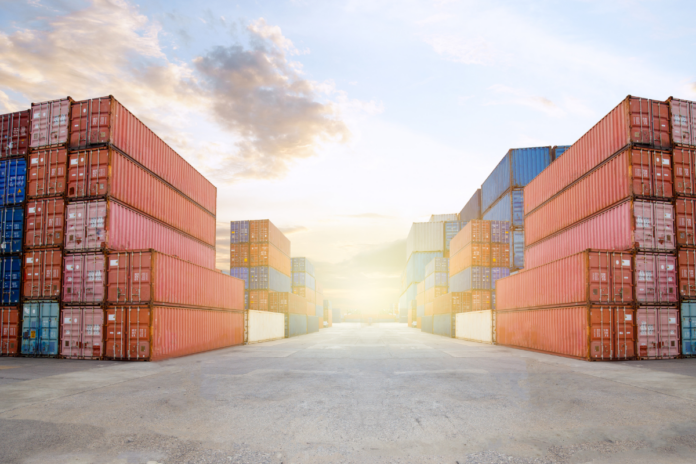International shipping isn’t just about moving goods from one point to another. It is a complex process with many moving parts, all working in synergy to ensure that commodities traverse continents and oceans, getting to their destinations as scheduled. Hence, making a sense of the vast and interconnected world of international shipping demands a thorough exploration of its underlying processes and systems.
Whether we’re talking about the latest tech gadgets, ingredients for your favorite meal, or raw materials for manufacturing industries, international shipping is the place-keeper ensuring goods get to where they’re needed most. It’s a wheel within a larger wheel, driving global trade and facilitating exchange between nations. This article intends to explain the processes and components that keep the world rotating on the axle of trade.
The Need for International Shipping
International trade has become an important catalyst for the growth and development of nations, primarily due to the rise in global integration and interconnectedness. Countries source a variety of goods and services from across the globe owing to aspects such as cost advantage, availability, quality, and specialization. For example, shipping Canada to Australia demonstrates the link between two geographically distant nations and their exchange of goods, enabled via the seamless service of international shipping.
International shipping forms the backbone of global trade, supporting economies at both macro and micro levels. At a macro level, shipping influences a nation’s export and import values, contributing to its GDP. On a micro level, it impacts businesses by enabling them to source raw materials, distribute finished goods, and even explore new markets. It’s thus beneficial for nations to invest in robust international shipping infrastructure and regulations to facilitate the smooth flow of goods and services.
The Role of International Shipping in Globalization
International shipping acts as the key connection globally, tying together a network of global supply chains. It enables the exchange of products, ideas, and resources, leading to cultural and economic convergence. From facilitating the movement of raw materials to transporting finished goods, shipping has an important role in maintaining the rhythm of the global trade cycle. Moreover, it fosters international relations, promotes cross-border cooperation, and supports global economic growth.
Fundamentals of International Shipping
The process of International shipping consists of transporting goods from a supplier in one country to a customer in another, following strict international trade rules and regulations. This activity is a necessary component of international trade, helping countries to exchange goods and services based on their economic needs. The operation of international shipping involves a meticulous procedure of paperwork, packaging, custom formalities, and tracking, ensuring the cargo’s safe travel over international borders.
International shipping can take various transportation forms, such as sea freight, air freight, rail, and road transportation. Sea freight is frequently the favored method due to its cost-effectiveness and capacity to handle large, heavy cargoes. It is followed by air freight, known for its speed and reliability, ideal for time-sensitive goods. Then, we have rail and road transportation, often used for short to medium distance shipments and, in most cases, supplement sea and air freight by covering the ‘last mile’ of the delivery process.
Key Industry Players
Shipping companies own and operate passenger or cargo ships, providing sea transportation for goods. Freight forwarders act as intermediaries between the shipper and transportation services, facilitating smoother shipping procedures. They help with storage, shipping, and handling documentation like Bills of Lading and invoices. Lastly, Customs Offices carry out the role of regulatory bodies. Their duty is mainly to control the flow of goods, especially dangerous and banned goods, into and out of a country. They oversee the payment of duties and taxes levied on imports and exports.
The International Shipping Process
International shipping starts with the supplier or manufacturer liaising with a shipping company to organize the shipping process. This involves packing the shipment correctly, documentation, and scheduling a pickup. From there, the goods are loaded onto the shipping vessel, ready for transport. The shipment then starts the move, which could be via air, sea, rail, or road, depending on the agreed-upon mode of transport. This phase includes travel and transit times, which vary based on routes, distances, and modes of transport. Upon arrival at the destination country, the cargo is unloaded and set to go through customs clearance. This step involves the verification of documents, inspection, duties payment, and finally clearance. Following clearance, the shipment is delivered to the final recipient.
The Future of International Shipping
The future of international shipping is geared to be driven by several emerging trends, disruptive innovations, and technological advancements. With automation and the Internet of Things (IoT), ship operations and freight management will become more efficient, heralding a new era in global trade. Moreover, trends like Autonomous Shipping and Drone cargo delivery are on the horizon. The future of international shipping shows promise and is changing to meet the demands of the 21st-century economy. The prediction for the industry is a sophisticated blend of virtual and physical logistics, spearheading a major transformation in global commerce.
International shipping connects diverse economies and enables the flow of goods across borders. With the rising influence of technology, the face of the industry is changing, offering prospects for greater efficiency, transparency, and sustainability. As we cover this subject, it becomes evident that understanding the subject of international shipping is key to grappling with our interconnected world and its future.










